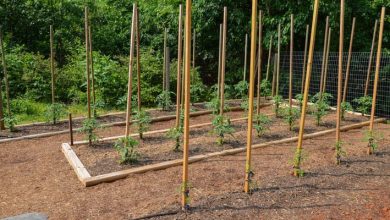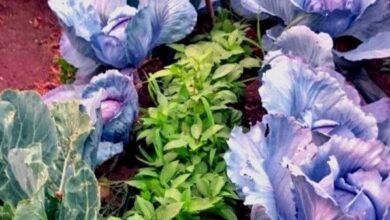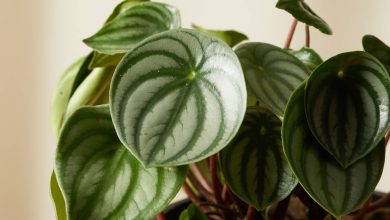Daffodil Care: [Soil, Moisture, Pruning and Problems]
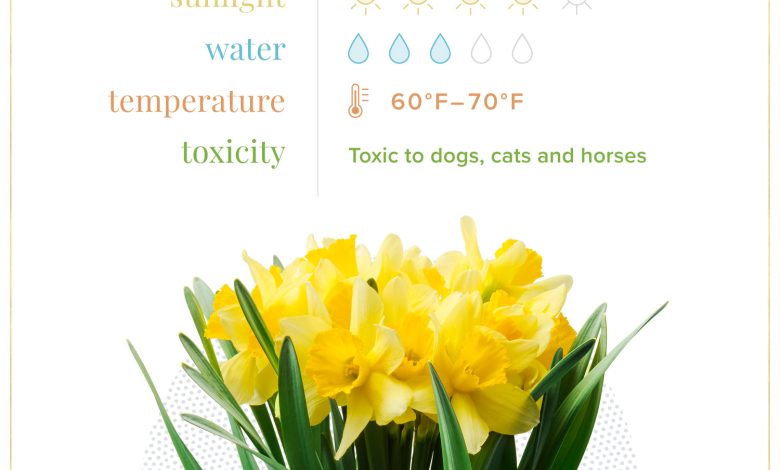
What characteristics do daffodils have?
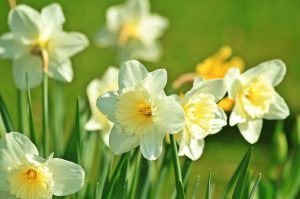 Daffodils or Narcissus comprise a genus of about 400 varieties all from the Mediterranean basin, China and central Asia.
Daffodils or Narcissus comprise a genus of about 400 varieties all from the Mediterranean basin, China and central Asia.
They are famous for their great rusticity, they adapt to all soils. They are ideal in borders, massifs, in coexistence with other bulbs of tulips and hyacinths.
They are bulbous herbaceous perennials that bear beautiful flowers with a striking trumpet shape in yellow, orange and white colors, in late winter and spring, although there are species that bloom in autumn.
It can reach a height of about 50cm and its flowers are very showy and fragrant, with a maximum duration of 20 days. Among the best known varieties are the Trumpet daffodils, the daffodils with large cup and small cup, Narcissus triandus, Narcissus cyclamineus, Narcissus t azetta, Narcissus poeticus, among others.
What soil needs do daffodils have?
While it is true that most varieties of daffodils can live happily in a wide range of soils, it is also true that they prefer moderately fertile, well-drained soils.
In the preparation, it is necessary to make sure that the soil is very soft because that will allow the healthy expansion of the roots. Another key: you have to plant in substrates that filter well, since this is an important condition for them to fully develop during the growth stage.
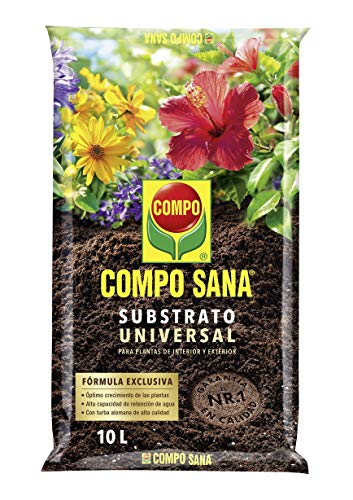
What it demands in general terms is a loose substrate, rich in organic matter. And if decomposed vegetable matter is added in abundance on the surface of the land, it contributes greatly to avoiding the appearance of diseases.

Daffodil bulbs are successfully planted in the fall, an ideal time for the first leaves to take root and emerge, a positive sign that will then give way to beautiful flowers in spring.

These bulbs should be planted separately, at a distance of about 20 cm from each other, on a previously moistened substrate where holes of about 18 to 20 cm deep have been dug.
An important fact is that the bud of the bulb must face the sky, it goes upwards. Immediately afterwards, the land is abundantly watered, taking care that the water does not remain stagnant.

That is why it is very important that the substrate is loose, light, with a very good filtration capacity. In a pot, a universal substrate can be used and equal parts of peat, coconut fiber and earthworm humus can be added.


How to make daffodils grow strong and vigorous?
One of the keys to growing daffodils is light. It cannot be intense, direct, but neither can they live in a deficit of light, in darkness. They need moderate to full light, but indirect. If, for example, it is kept in a pot, it can remain in a place near a window, in semi-shade.
Direct sun exposure for a long period completely damages the bloom, ruins the plant. Irrigation is continuous, but controlled, a few times every 2 to 3 times a day.

It is ideal to moisten the substrate without causing puddles or puddles that damage the bulbs with rot that ends up making the plant sick to the point of killing it.
Although the daffodil is a very responsive plant that grows without being too demanding, it is also important to give it a moderate fertilization when the soil nutrients are depleted. A fertilizer rich in organic matter comes after harvesting, because in this way the depleted nutrients will be correctly replaced.
How much humidity do daffodils need?
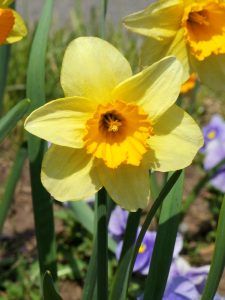 Daffodils need to live in ideal temperatures that range between 15ºC to 20ºC during the day and between 10ºC and 13ºC at night.
Daffodils need to live in ideal temperatures that range between 15ºC to 20ºC during the day and between 10ºC and 13ºC at night.
But they are tolerant to minimum temperatures ranging from 1ºC to 3ºC. This means that they like temperate to cold climates. Heat is your worst enemy.
In fact, indoors you have to keep them away from areas near heating systems because this will make them lose leaves quickly.
In order to maintain constant humidity, the soil must always be moist and well drained, because the bulbs are intolerant to waterlogging.
It is convenient to buy a potted plant that has flower buds, a specimen with flowers will not work. Then, it should be placed in the coolest place in the house.
Guaranteeing constant humidity is essential, but it is best to do it following the technique of the plate with water at the base of the pot, so that we obtain a splendid first flowering.
Once the flower show has occurred, approximately one month later, the plant will be transplanted to a place in the garden or to another larger pot.
Under a tree, the daffodil will happily go through its regular cycle of development. In May the leaves disappear but the underground bulb knows when to activate to guarantee a very showy floral production between February and March, an unequivocal sign of the arrival of spring.
Is it necessary to prune daffodils?
It is only necessary to remove dried leaves and flowers, very carefully. And collect plant debris to prevent the appearance of pests and diseases. A simple maintenance pruning is the norm to follow, without many rigors.
How often should we prune daffodils?
It is always necessary to prevent dry leaves and flowers from weakening the plant. That is why you have to eliminate them every time the flowering ends.
How to avoid daffodil pests and diseases?
They are plants sensitive to certain pests. Let’s see what the main ones are:
Nematodes (Ditylenchus dipsaci)
Its favorite victims are young bulbs and tender shoots. It thrives in temperatures between 15-20ºC, but decreases in colder climates, with ranges below 10ºC and above 22ºC. That makes it a health concern for daffodils.
The nematode attacks the base of the bulb and the aerial parts of the plant. Necrosis and swelling appear on the stem, chlorotic spots on the leaves and growth stops.
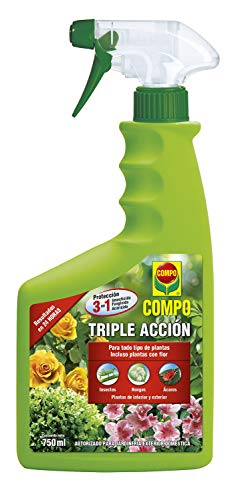
To prevent it, it is essential to have the land free of weeds, eliminate the affected plants and disinfect the bulbs before planting, immersing them in hot water at about 43.5 ºC for about 15 to 20 days for 3 hours a day, after harvesting..
The most effective method is steam pasteurization. For this, the guidance of a specialist is the best.
Bulb midge (Eumerus sp.)
It is a dipteran with a powerful larva capable of penetrating the bulbs viciously, because it feeds on their nutrients and also ruins the roots. Avoiding the attack of this larva will always depend on keeping the cultivation site free of weeds and crop debris.
Biological control is carried out with the support of the following fungi: Beauveria bassiana or Entomopthora.
aphid
It occurs during the cultivation of the daffodil and also when the bulbs have been harvested and are in the preservation period. It loves to feed on fresh bulbs, causing tremendous and irremediable deformations. But the worst thing is that they transmit viruses, so preventive measures must be taken, such as:
- Use of anti- aphid mesh.
- Eliminate weeds from the farmland and in the greenhouse, because they are the best ally of aphids.
- Also eliminate symptomatic plants, with diseased traits.
Establishing biological control is best, using effective predators such as Coccinella septempunctata and Chrysopa or parasites such as Aphelimus mali. Another way is to use specific insecticides before the plant can suffer major damage. Expert help is important to exterminate nuisance aphids.
daffodil fly
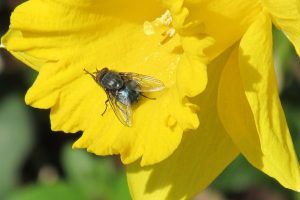 It is a pest that usually breaks out in the middle of summer. Its larvae enter the bulbs to get food, weakening the plant completely, since they cause deformations and the leaves turn yellowish and ugly.
It is a pest that usually breaks out in the middle of summer. Its larvae enter the bulbs to get food, weakening the plant completely, since they cause deformations and the leaves turn yellowish and ugly.
The best way to prevent it is with a full disinfection of the bulb before planting, immersing it in hot water (40-50ºC) for 3-4 hours.
It is also prudent to remove weeds, crop debris and organic matter in general. Among the most relevant diseases in daffodils we have considerable fungal attacks. Let’s see:
neck rot
It is caused by a fungus that shows no mercy to daffodils, the Fusarium sp. It damages roots and stems, causing a very noticeable reddish-brown rot, generating chlorosis in leaves, growth delays and affectation of flower buds, which will not appear.

To prevent it , crop rotation is recommended every 5 years, the use of authorized chemicals for fumigation, weed suppression, quick drying of corms and liming of the soil.
Botrytis cynerea
This is another fungus that prefers to enter through the wounds of the plant, in conditions of high temperature and environmental humidity. In the stems, leaves and flowers appears a gray mycelium with great capacity for expansion.
Penicillium sp.
Its moment of appearance is in the storage of the bulbs, in temperatures below 17ºC and high humidity. The bulbs are contaminated with necrotic spots on their scales until a brownish hue appears that turns into a spongy white lesion, because it causes significant damage.
Consequently, the diseased bulbs will only give short, dwarf, stunned shoots. In storage, humidity should not be above 70%.

![Photo of Willowherbs: [Cultivation, Irrigation, Care, Pests and Diseases]](https://www.complete-gardening.com/wp-content/uploads/2022/08/willowherbs-cultivation-irrigation-care-pests-and-diseases-390x220.jpg)
